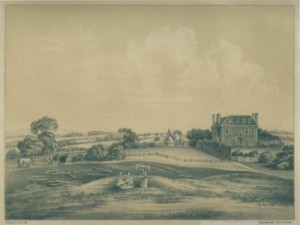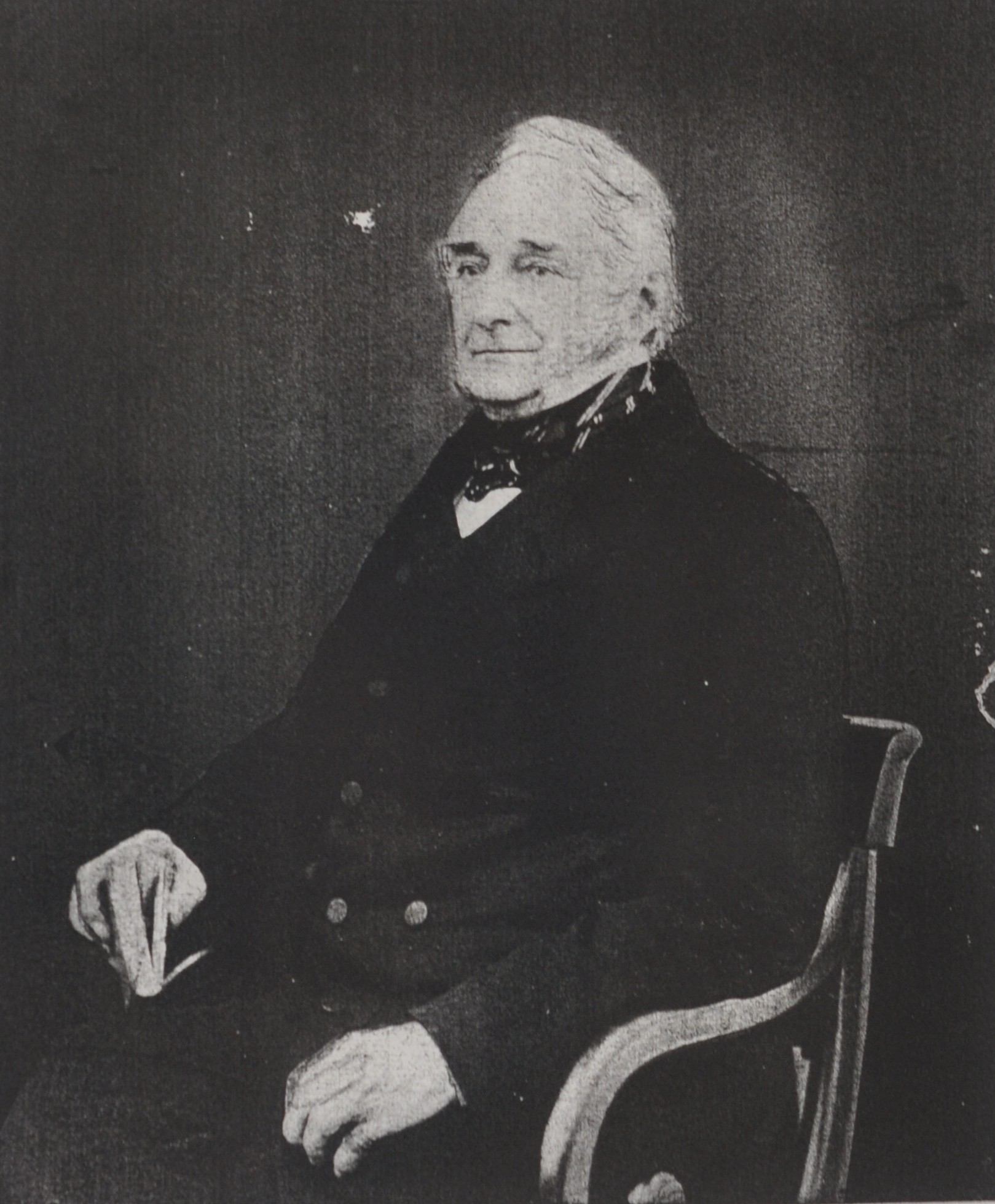 The rear, western part of the building was built in 1688 for Samuel and Anne Watlington, their initials and the date may be seen on the rainwater hopper boxes on the north and south sides of the house. The eastern part, fronting onto Watlington Street, is thought to date from 1763. Samuel Watlington served as Mayor of Reading in 1695 and again in 1711.
The rear, western part of the building was built in 1688 for Samuel and Anne Watlington, their initials and the date may be seen on the rainwater hopper boxes on the north and south sides of the house. The eastern part, fronting onto Watlington Street, is thought to date from 1763. Samuel Watlington served as Mayor of Reading in 1695 and again in 1711.
We do not know the age of the low “farm” building to the side of the house. Its timber structure suggests it predates the 1680s construction of the rear part of the house.
The first recorded occupant of the house was Captain Edward Purvis who was born in in 1787. He fought under Lt Gen Sir John Moore at the Battle of Corunna on 16 January 1809 during the Peninsular War. The battle ensured the escape of the British army from Spain though Sir John Moore died at the moment of success. Capt Purvis was serving with the 4th Regiment of Foot.
Back in Reading he trained the Berkshire Militia in Orts meadow near his then home in Orts Road where his family is recorded as living in in 1841.
 By the 1851 Census his family is recorded as living at Watlington House. He was 64 and his wife Lettice 62. He is recorded as being ” Capn in army, & retired adjutant of malitia & boro). The family were still there in 1871. Capt Purvis died in 1873 and his wife Lettice/Leticia in 1875. The 1851 census shows that their daughters were “at home” ( Sophia 29, Marcella 26 and Mary 24) with son Edward 25 having “No profession”. Their servants were; Lucy Wicks 38 from Wakefield the Ladies Maid, Hannah Withers 35 from Hampshire the Cook, Charlotte Pocock 21 from Buckland (Hants) the Housemaid and Charles Franklin 26 from Reading was the Footman.
By the 1851 Census his family is recorded as living at Watlington House. He was 64 and his wife Lettice 62. He is recorded as being ” Capn in army, & retired adjutant of malitia & boro). The family were still there in 1871. Capt Purvis died in 1873 and his wife Lettice/Leticia in 1875. The 1851 census shows that their daughters were “at home” ( Sophia 29, Marcella 26 and Mary 24) with son Edward 25 having “No profession”. Their servants were; Lucy Wicks 38 from Wakefield the Ladies Maid, Hannah Withers 35 from Hampshire the Cook, Charlotte Pocock 21 from Buckland (Hants) the Housemaid and Charles Franklin 26 from Reading was the Footman.
The image left is in the entrance hall of Watlington House. The photo must have been when he was in his early 80s.
(our thanks to Mary Chambers for providing the above about the house occupancy 14/10/2025)
The house was rented by Capt Purvis from Reading Council at £25 per year.
In 1877 the house became the first home of the newly founded Kendrick Girls School. The school remained on the site until 1927, when they moved to their current location on the corner of Sidmouth Street and London Road. During their stay they erected a corrugated iron hall in the garden, which today is hired by many groups.
Since 1931, the building has been owned by local trustees. It has been used to provide accommodation for social and educational organisations and the Garden Hall has been rented out. The house has been used in the past the Berkshire WI’s (see image to the right), Scout and Guides groups.
In 2025 the house is rented out to 5 different charities and a small firm of architects. The hall continues to be rented out to various groups ranging from dance/exercise groups to Readifolk club. It is also hired for small events such as Wedding celebrations, Baby Showers, University reunions, by local councillors and MP to meet constituents. The income generated is ploughed back into maintaining the buildings and the garden.
A Piece of Reading Abbey
 Many houses in Reading retain flint in the building walls which is believed to come from Reading Abbey. There is clear evidence of this within the Walls for Watlington House. Robert Watlington was commissioned to clear the remains from Reading Abbey, the remaining items mostly being timber & flint. In the oldest part of Watlington House an ancient Stone Plinth has been set in the wall in the area once used by Toc H Chapel. The Stone Plinth was found on the premises when restoration work was undertaken, it is believed to be from Reading Abbey, which makes the Plinth an important piece of skilled stone work.
Many houses in Reading retain flint in the building walls which is believed to come from Reading Abbey. There is clear evidence of this within the Walls for Watlington House. Robert Watlington was commissioned to clear the remains from Reading Abbey, the remaining items mostly being timber & flint. In the oldest part of Watlington House an ancient Stone Plinth has been set in the wall in the area once used by Toc H Chapel. The Stone Plinth was found on the premises when restoration work was undertaken, it is believed to be from Reading Abbey, which makes the Plinth an important piece of skilled stone work.
The first Kendrick School
In 1877, Watlington House changed from being a family home to that of Kendrick School. This was to last for 50 years until the decision to leave this wonderful building was finally made and Kendrick moved into their new premises. Some old features from when Kendrick occupied the premises still exist; the outside toilets and Hall are the two most obvious. Drawings and notes taken from the pupils’ diaries help to give an idea of how Watlington House once played host to the range of lively activities that took place in the grounds.
The stone plinth above the front door has since been removed and can now been seen in the outer wall for the current Kendrick School, on Sidmouth Street.




